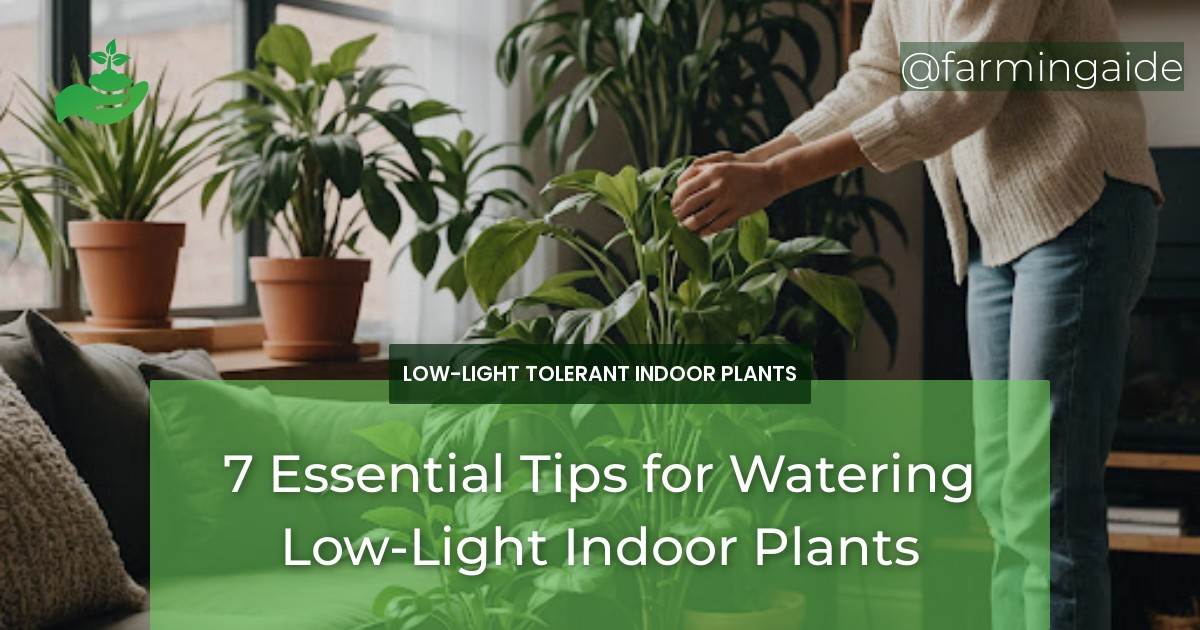Are you struggling to keep your low-light indoor plants happy and healthy? One of the most critical factors in their care is proper watering. Overwatering can be detrimental to these plants, while underwatering can lead to slow growth and discoloration. In this article, we’ll explore the essential tips for watering low-light indoor plants, ensuring they thrive in their environment.
Key Takeaways
- Assess your plant’s water needs based on factors like pot size, soil mix, and humidity.
- Choose the right watering technique, such as top-down or bottom-up watering.
- Water at the right time, considering the time of day and seasonal adjustments.
- Use the right water temperature, avoiding cold or hot water.
- Monitor humidity levels and adjust watering frequency accordingly.
- Use quality water, such as filtered or rainwater, to prevent mineral buildup.
- Adjust watering frequency based on seasonal changes and plant growth.
Understanding Low-Light Indoor Plants
Low-light indoor plants are adapted to thrive in environments with limited natural light. These plants have evolved to survive in conditions with reduced light intensity, often found in indoor spaces. Understanding the unique characteristics of low-light plants is crucial for providing the right care.
Some common types of low-light plants include Chinese Evergreen, Pothos, and Peace Lily. These plants have adapted to survive in low-light conditions, but still require proper care, including watering, to flourish.
Common Types of Low-Light Plants
| Plant Name | Description |
|---|---|
| Chinese Evergreen | A low-maintenance plant with beautiful silver-gray leaves. |
| Pothos | A versatile, low-maintenance plant that can thrive in various lighting conditions. |
| Peace Lily | A beautiful plant with elegant white blooms and dark green leaves. |
Characteristics of Low-Light Plants
Low-light plants have adapted to survive in environments with limited natural light. They often have larger leaves, which help them absorb as much light as possible. These plants may also have slower growth rates and require less frequent watering.
Low-light plants are also more susceptible to overwatering, as they are less efficient at using water. This makes proper watering techniques crucial for their care.
The Importance of Proper Watering
Proper watering is essential for the health and survival of low-light indoor plants. Overwatering can lead to root rot, while underwatering can cause slow growth and discoloration. It’s crucial to find the right balance for your plants.
Watering low-light plants requires careful consideration of factors like soil moisture, pot size, and humidity. By understanding these factors, you can provide your plants with the right amount of water, ensuring they thrive.
ALSO READ
Effects of Overwatering and Underwatering
Overwatering can cause root rot, leading to plant death. Underwatering can cause slow growth, discoloration, and weakened immune systems. Proper watering techniques can help prevent these issues.
Signs of overwatering include yellowing leaves, soft stems, and water pooling around the base of the plant. Underwatering can cause wrinkled leaves, dry soil, and slow growth.
Signs of Watering Issues in Low-Light Plants
| Sign | Description |
|---|---|
| Yellowing Leaves | Overwatering or nutrient deficiency. |
| Wrinkled Leaves | Underwatering or low humidity. |
| Soft Stems | Overwatering or root rot. |
Tip 1: Assess Your Plant’s Water Needs
Before watering, assess your plant’s water needs based on factors like pot size, soil mix, and humidity. This will help you determine the right amount of water for your plant.
Factors like pot size, soil mix, and humidity can affect your plant’s water needs. For example, a plant in a small pot with well-draining soil may require less water than a plant in a large pot with dense soil.
ALSO READ
Factors Affecting Water Requirements
Pot size, soil mix, humidity, and plant species are all factors that can affect your plant’s water requirements. By considering these factors, you can tailor your watering schedule to your plant’s unique needs.
For example, a plant in a small pot with well-draining soil may require less water than a plant in a large pot with dense soil. Similarly, a plant in a humid environment may require less water than a plant in a dry environment.
How to Check Soil Moisture
Checking soil moisture is crucial for determining when to water your plant. You can check soil moisture by inserting your finger into the soil up to the first knuckle. If the soil feels dry, it’s time to water.
You can also use a moisture meter to check the soil moisture levels. This can be especially helpful for plants that require precise watering schedules.
Tip 2: Choose the Right Watering Technique
Tip 3: Water at the Right Time
Tip 4: Use the Right Water Temperature
Tip 5: Monitor Humidity Levels
Tip 6: Adjust Watering Frequency
Tip 7: Use Quality Water
Conclusion: Mastering the Art of Watering Low-Light Indoor Plants
Watering low-light indoor plants requires careful consideration of factors like soil moisture, pot size, and humidity. By following these essential tips, you can provide your plants with the right amount of water, ensuring they thrive in their environment.
Remember to assess your plant’s water needs, choose the right watering technique, and adjust watering frequency based on seasonal changes. With practice and patience, you’ll become a master of watering low-light indoor plants, enjoying the benefits of healthy, thriving plants in your home or office.


